Is this Asia’s best stopover city?
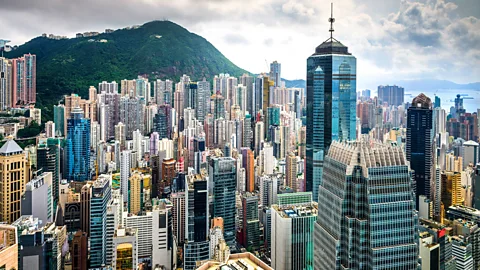 Alamy
AlamyThe banking hub of Hong Kong has long been a prime destination for business travellers – but there’s more to the city than meetings and conferences, writes Christopher DeWolf.
Hong Kong doesn’t need much introduction as a business hub. Trading has always been this city’s lifeblood, from its days as a British-controlled free port to its growth as a global financial hub.
Hong Kong benefits from a strategic location between Japan, China and southeast Asia, which has made it a global travel hub, with just over 70 million air passengers in 2016.
With one of the world’s highest concentrations of banking institutions (71 of the world’s 100 largest banks operate out of there) Hong Kong attracts business travellers from all over the world. In the first quarter of 2016, some 314,000 visitors to the territory came for meetings, conventions and exhibitions.
While banking is still a big part of the city, business travellers of a different stripe are being drawn to an emerging industry in the SAR: the art market.
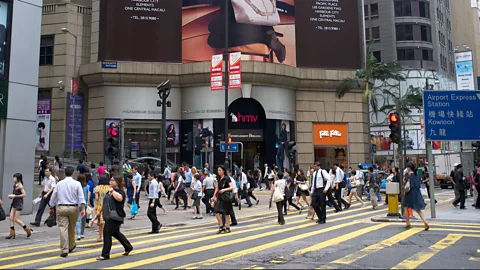 Alamy
AlamyWith Art Basel and other fairs, along with auction houses and an expanding roster of blue-chip art galleries, Hong Kong accounts for a growing chunk of the world’s art market and those who travel to scour it. Based on the value of its auction sales, it is the third-largest art market in the world, after London and New York.
“Money talks,” says Hong Kong-based management consultant Daryl Chan, and if people in Hong Kong can find a business opportunity in something, they will take advantage of it. The ingredients behind the art boom are the same ones that made Hong Kong a global commercial centre in the first place.
“It’s the practicalities of doing business here which makes it easy,” says Chan. Low taxes, easy business registration, a pool of international talent and strong rule of law draw companies to Hong Kong, whether they are in the business of selling paintings or software.
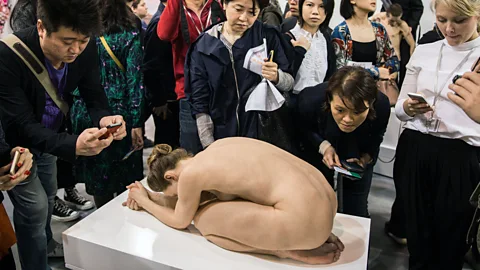 Getty Images
Getty ImagesGetting in and around
Air travel consultancy Skytrax has consistently ranked Hong Kong’s international airport among the best in the world since it opened in 1998, and the Lord Norman Foster-designed terminal remains a breath of fresh air after a long flight. Frequent visitors can sign up to use the Immigration Department’s eChannel, which cuts time spent at passport control to just a couple of minutes. Once you’re past customs, the Airport Express whisks you to Hong Kong Island in 24 minutes for HK$90 ($12) – about a third of the price of a taxi.
Once you’re in town, a rechargeable Octopus card gives you access to the frequent, reliable and inexpensive MTR subway system. Taxis are also affordable, with a HK$22 ($2.80) flagfall that includes 1.5km of travel before the meter starts ticking upwards.
Cultural considerations
Before setting foot in Hong Kong, remember you’re going to a Special Administrative Region of China – not mainland China itself. Hong Kong’s British colonial legacy has left it with a different language, currency, legal system and culture than mainland China
While English is prevalent and Mandarin is increasingly common in the business world, Cantonese is Hong Kong’s lingua franca. Ng goi is probably the most useful word you can learn: it can be used to mean “please,” “excuse me” and “thank you” in different contexts.
While Hong Kong is distinct, there is plenty of cultural overlap with the mainland, especially when it comes to the concept of saving face. The worst thing you can do is make your partner or client feel belittled. Concessions, even symbolic ones, are essential to maintaining a good relationship that saves everyone face.
Food is another place where foreign visitors risk a misstep. Business dinners at Chinese restaurants usually involve shared dishes. Courtesy is paramount: make sure to fill your dining companion’s cups with tea or water before filling your own, and don’t take the last piece of food on a dish. Never stick your chopsticks upright in a bowl of rice as this resembles the joss sticks used at a funeral.
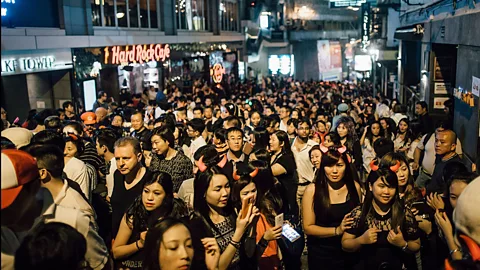 Getty Images
Getty ImagesMoney matters
A surging property market has made Hong Kong one of the most expensive cities in the world, so if you stick to the main business districts, expect eye-watering prices for everything from a cup of coffee to a steak dinner – a report by business-to-business sourcing service Expert Market pegs the average daily cost of a business trip at US$523, compared to $478 in Singapore and $442 in New York.
Many places accept Visa and MasterCard, but not often American Express, and many smaller businesses are cash-only. Automatic teller machines are plentiful around the city, including those for major international institutions like HSBC and Citibank.
Tipping is not customary, though many diners do leave a token gratuity at upscale restaurants. In many restaurants and bars, a 10% service charge is automatically added to the bill.
Where to stay
Hong Kong’s hotel scene was once dominated by big-name brands with opulent but somewhat stodgy interiors, but the industry has been shaken up by punchier new boutique offerings in the past few years.
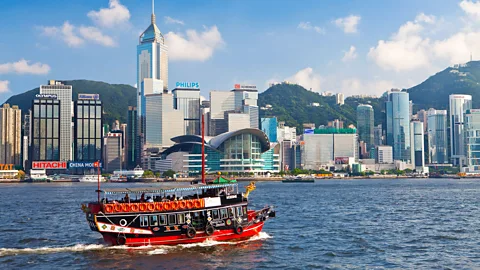 Alamy
Alamy“The old iconic hotels are updating their interiors and overall offerings because of new independent players in town fighting for the tourist dollar,” says architect JJ Acuna, design principal of JJA/Bespoke Architecture.
Most business travellers stick to the main commercial districts of Central and Wan Chai, where a stable of opulent five-star properties like the Mandarin Oriental, Four Seasons and Grand Hyatt compete with sleek newcomers such as Upper House and Mira Moon.
High rents are increasingly pushing Hong Kong businesses further afield, though, which means an entirely new crop of neighbourhoods now appeal to business visitors. In Quarry Bay, Hotel East is close to the office towers of Taikoo Place and the up-and-coming business district of Kowloon East, while the Ritz-Carlton and W Hotel, located above an Airport Express station, are convenient options for both the International Commerce Centre and Central.
Dining alone
Hong Kong has always been a paradise for food lovers, with acclaimed restaurants at all price points – the 2017 Michelin guide includes 61 starred restaurants, among them famous dim sum chain Tim Ho Wan, where a hearty meal for one costs no more than HK$100 ($13).
The average Hong Kong apartment is just 40 sq m (431 sq ft) in size, so restaurants are packed every night with groups of friends and solo diners alike. There is an abundance of quick and casual neighbourhood restaurants, which serve satisfying bowls of wonton noodles or dishes of Cantonese roast meat and rice for less than HK$45. Try Kau Kee’s curry brisket noodles in Central or, a short walk from there, Yat Lok’s barbecued pork.
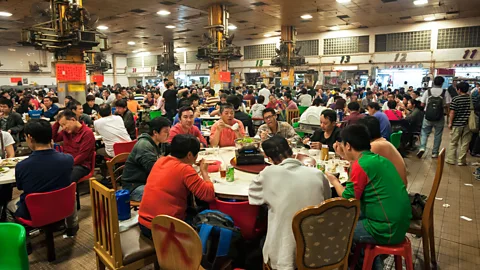 Alamy
AlamyIn recent years, Hong Kong has seen a boom in casual, yet refined, restaurants helmed by ambitious chefs. At Fish School, David Lai—who trained under famed French chef Alain Ducasse—delivers modern dishes made with local seafood, while up-and-comer May Chow offers a cosmopolitan take on Shanghainese flavours at buzzing gastropub Second Draft.
Off the clock
Business travellers to Hong Kong have always been spoilt for choice when it comes to off-hour activities, whether that means hitting the beach, drinking in one of the city’s many bar districts, hitting the trails in the 440sq km of protected country parks – or some combination of all three.
But Hong Kong’s culture boom has added even more diversions to the mix. International galleries like White Cube, Gagosian and Ben Brown Fine Arts regularly bring big-name artists to town, while local non-profit institutions like Para Site and Spring Workshop are havens for thought-provoking exhibitions.
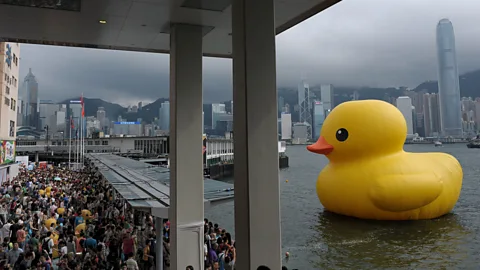 Getty Images
Getty ImagesThey will soon be joined by some big new players. Tai Kwun, a contemporary art centre housed in a 19th Century prison compound, will open later this year with 15,000sq m of exhibition space in mysterious black boxes designed by Swiss architects Herzog & de Meuron.
